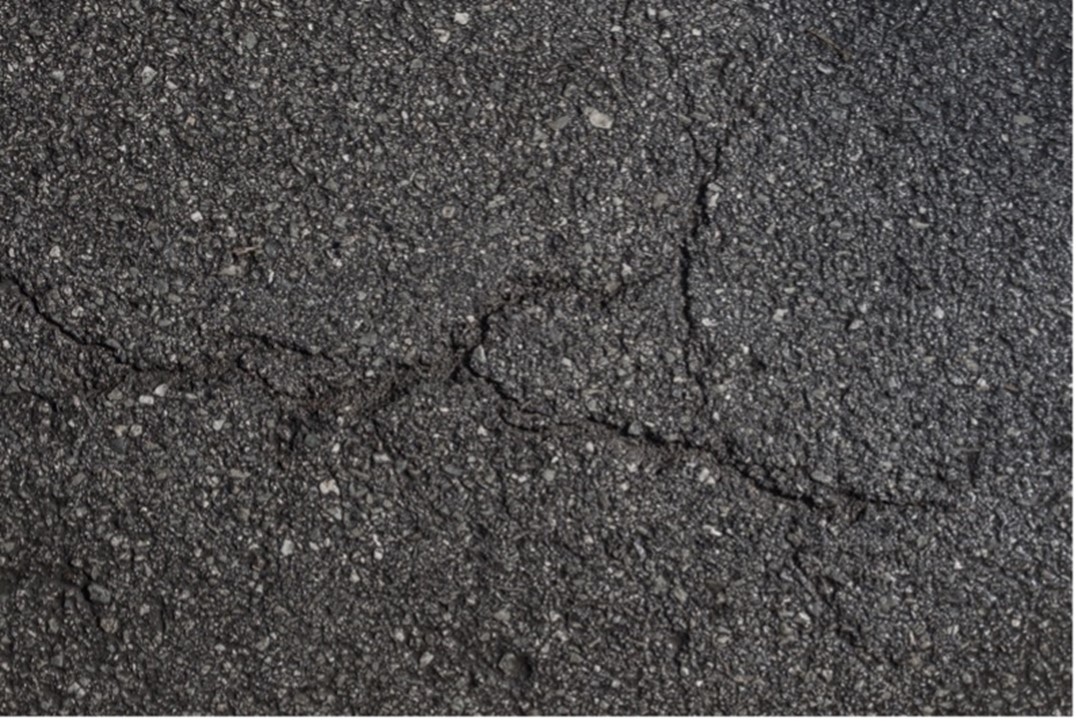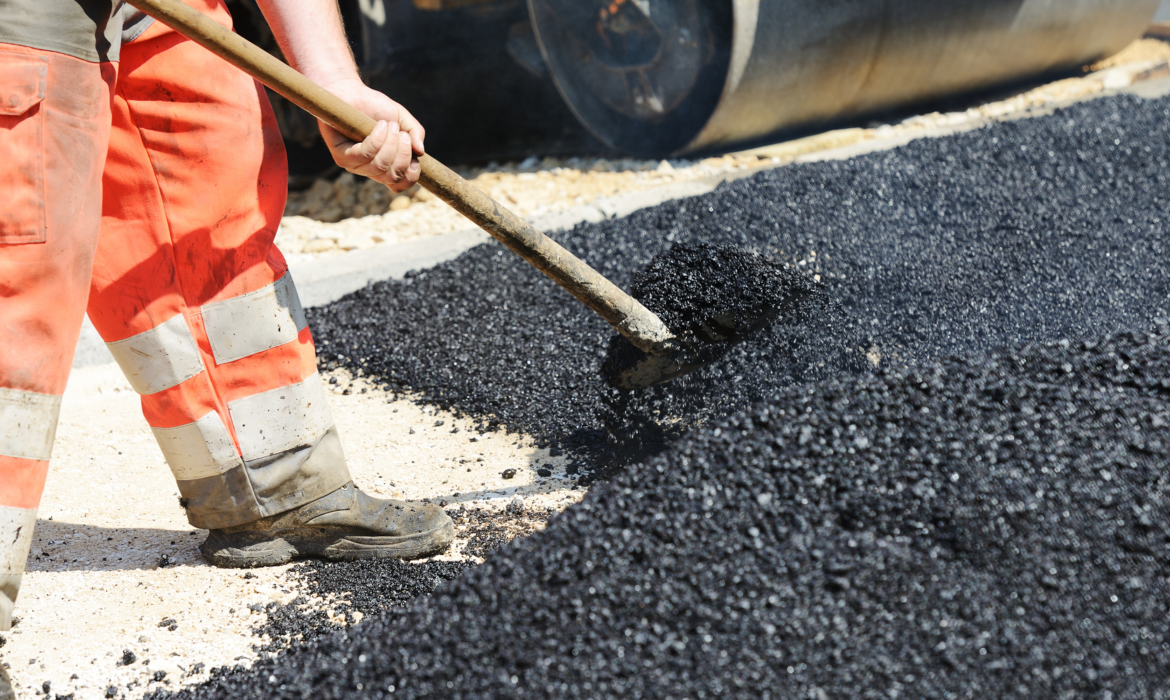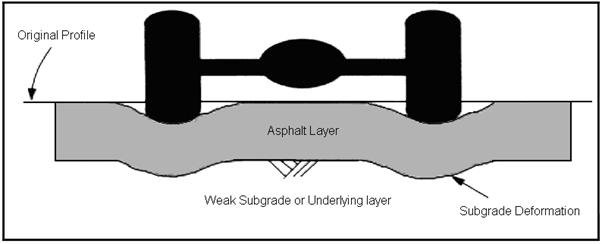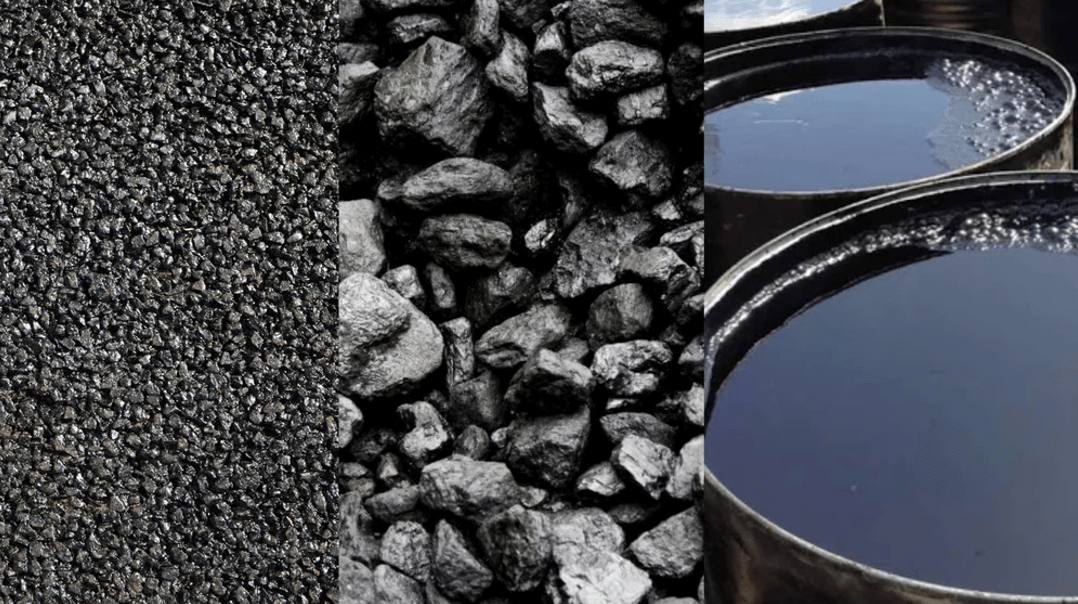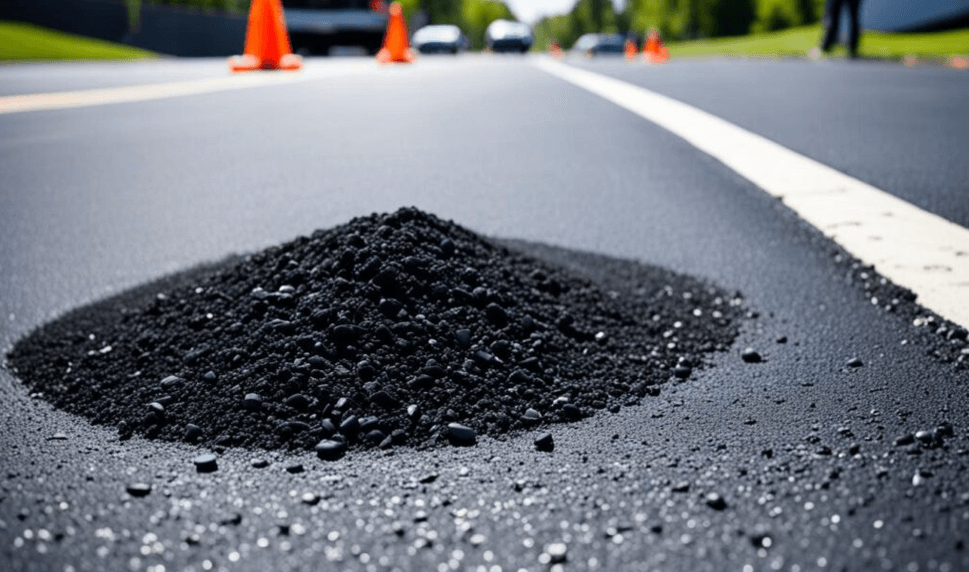RAP is being used widely today when constructing flexible pavement. Aging of asphalt binder in RAP results in high aging through oxidation, which compromises some of the major properties of the material such as flexibility and durability. ReActive N50T primarily play the role of restoring the aged and oxidised binder in RAP to revive its performance.
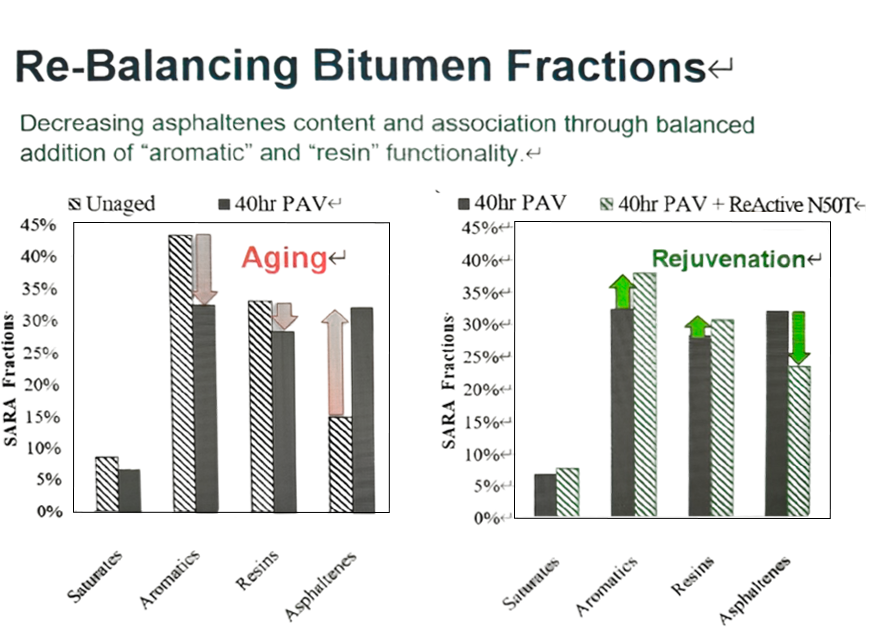
Reactive N50T effectively restores maltene fractions and aromatic resins lost through aging. Maltenes are responsible for the viscoelastic properties of the asphalt binder, while aromatic oils help maintain its fluidity and flexibility.
With continued oxidation of the asphalt binder, it embarks on brittle and is easily cracked. In contrast, ReActive N50T reverses this process through the addition of vital components into the binder; hence, a better quality asphalt mixture that prolongs pavement life. The rejuvenator penetrates the asphalt binder and refills its molecular structure, improving the long-term performance of the mixture accordingly.
This becomes particularly important when the road surfaces are exposed to high temperatures, ultraviolet radiation, or heavy traffic loads since these factors contribute to rapid asphalt binder oxidation.
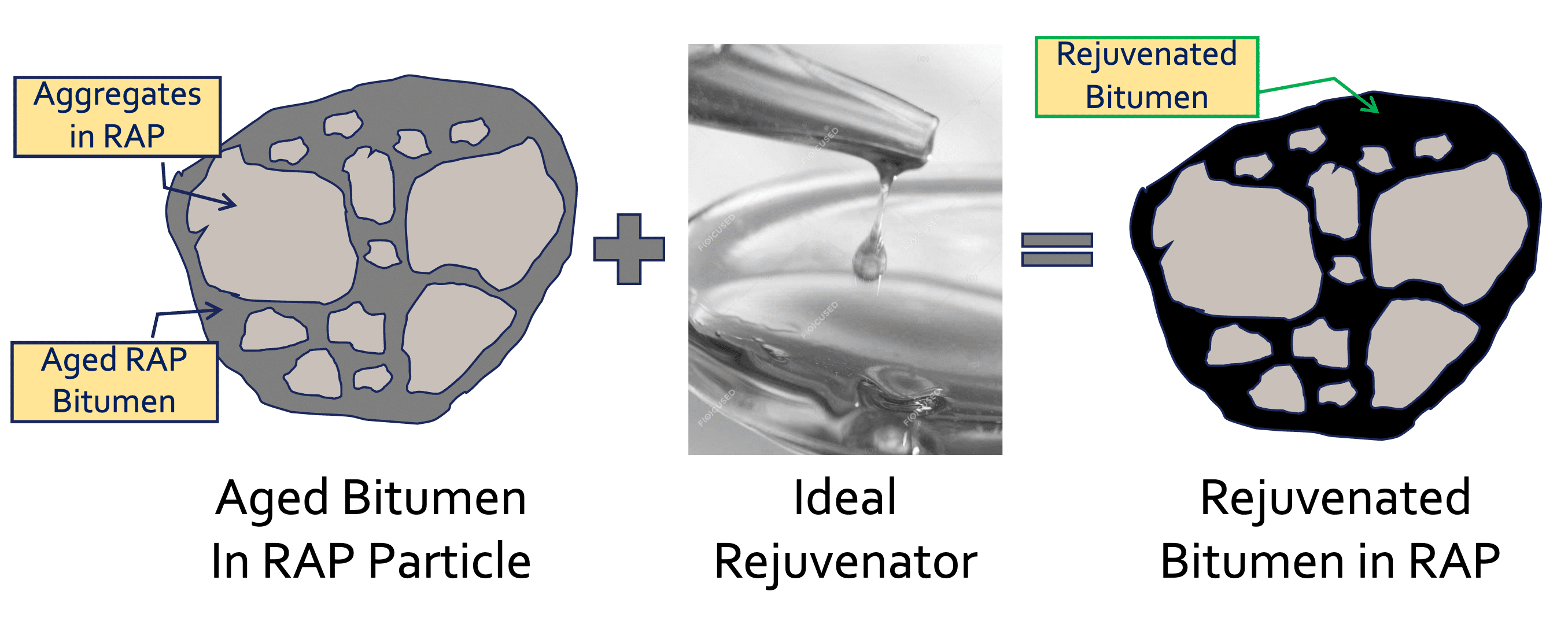 Oxidised asphalt before and after rejuvenator application, demonstrating the restoration of flexibility.
Oxidised asphalt before and after rejuvenator application, demonstrating the restoration of flexibility.
One of the key benefits of ReActive N50T, relates to improved low-temperature performance of the asphalt binder. Upon general aging, asphalt binder gradually loses flexibility and elasticity, making it more prone to cracking, especially in cold climates. Such phenomena become highly problematic for regions that go through extreme winter seasons due to increased pavement deterioration caused by repeated freeze-thaw cycles.
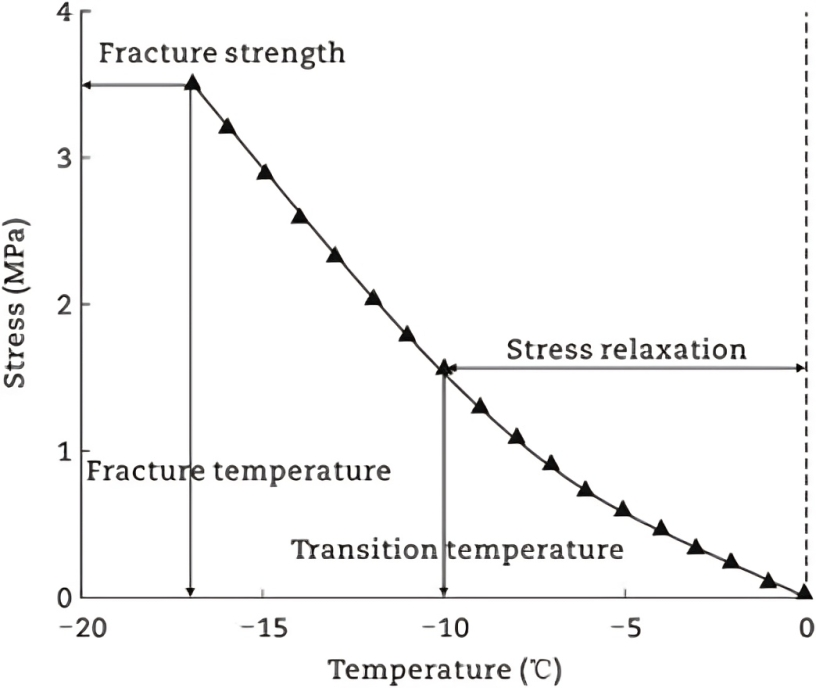
Therefore, the rejuvenation of the RAP binder using ReActive N50T significantly enhances its low-temperature resistance due to the restoration of its viscoelastic properties.
The improvement of the properties at low temperature is crucial on pavements so that thermal cracking can be avoided outcome of contraction due to cold temperatures beyond the tensile strength of a binder. Rejuvenation of the binder by ReActive N50T ensures continued durability of pavement for an extended period even under unfavorable environmental conditions. In addition to improvements within low-temperature features, the whole life span for pavements is extended. Cracks in pavement allow moisture to sip into it and further deteriorate the sub-base, hence causing early pavement failure. Prevention of cracking by ReActive N50T offers an advantage in sustaining the structural integrity of the road and minimises frequent repair works, thereby reducing maintenance costs.
Reactive N50T enhances the workability and compaction of RAP mixtures; hence, the mix is easier to handle in the process of paving. Workability refers to the ease with which the asphalt mixture may be manipulated on the roadway so that placing and compaction can be achieved without appreciable deformation of the material. A mix that has poor workability will be hard to spread evenly, resulting in an uneven surface that may lead to poor pavement performance.
By improving workability, ReActive N50T makes mixtures with RAP easy to handle and apply, creating a more uniform pavement structure. As a result, it improves potential compaction, which secures the desired density and strength of asphalt layers. Proper compaction reduces the air voids within the pavement, hence preventing water infiltration and improving resistance against deformation due to traffic loads.
This increased workability and compaction of the RAP mixtures with ReActive N50T will significantly contribute, especially for road projects in areas with very bad conditions, for example, in highland or remote regions. In this way, the improved handling of the mixture reduces both the time and effort spent paving, resulting in faster completion and reduced labor costs.
The problem with most rejuvenators is that they tend to over soften the aged binder, which could lead to rutting and other structural problems in the pavement. Rutting is one of the major distresses due to excessive softening of the asphalt binder, unable to support traffic loads, showing up as depressions or grooves on the pavement surface.
Reactive N50T strikes the ideal balance between regaining the original properties of the binder and maintaining strength and stability. All other recycling agents generally over-soften the binder; treatment with ReActive N50T renews the RAP binder with no loss in load-carrying capacity.
That ensures the rejuvenated asphalt maintains superior strength and is highly resistant to rutting or deformation under heavy traffic loads.
Prevention of over-softening is particularly important in urban areas with high volumes of traffic that put continuous heavy loads on the pavement.
The contribution of ReActive N50T toward the overall stability of the rejuvenated binder will have a beneficial effect on the road’s longevity and performance, thus reducing costly repairs and reconstruction.
Rutting resistance
Another strong benefit of the additive ReActive N50T is its broad compatibility with various asphalt technologies, such as PMA, PPA, warm mix additives, and anti-strip technologies. In turn, that allows more flexibility in the design and production of asphalt mixtures, enabling road engineers to optimize the performance of the pavement to specific project requirements.
For instance, PMA is usually applied to enhance durability and elasticity in asphalt mixes, especially for those areas that show severe weather conditions.
Because of its properties, ReActive N50T can work in combination with PMA so that the rejuvenated RAP binder would retain good flexibility and resistance to cracking even in unfavorable environmental conditions.
Furthermore, such compatibility with warm mix additives allows for the production of asphalt mixtures at reduced temperatures, reducing overall energy consumption and emissions during production.
Generally speaking, one of the main benefits associated with the application of ReActive N50T in RAP mixtures is environmental sustainability. Whereas overall sustainability in construction aims to reduce reliance on virgin materials, ReActive N50T allows for higher utilisation percentages of recycled materials, therefore decreasing the demand for new asphalt binder and, subsequently, conserving natural resources in the process.

Rejuvenation of aged asphalt with ReActive N50T decreases the carbon footprint resulting from the manufacturing of asphalt. This, of course, is because virgin asphalt binder production is extremely energy-intensive, requiring raw material extraction that takes a heavy toll on the environment.
Reactive N50T extends the life of reclaimed asphalt and its reutilisation on potential road projects, minimising considerable environmental damage caused by such activities.
Besides reducing waste by avoiding the use of new materials, the application of ReActive N50T reduces the impact on the environment in construction. The recycling/reusing act of asphalt fits into green road pavement programs and contributes to the sustainability achievement of targets for road construction companies.
Various economic benefits are related to the use of ReActive N50T in RAP mixtures. Performance and improvement in quality shall reduce dependency on high-cost virgin materials. It also increases the use of RAP in new asphalt mixtures by up to 80% while reducing the material cost of highway construction projects by a quantum.
In addition to material saving, the increased resistance of rejuvenated asphalt results in longer-lived pavements. Less frequent maintenance and rehabilitation are therefore required for roads made with ReActive N50T, which comparably reduces the long-term cost of both public and private road construction projects.

Reactive N50T is an economically viable solution for the road construction project in cases where the roadway budgets are limited in any region or the virgin materials have a higher cost. Therefore, this rejuvenated asphalt pavement, instead of this polymer modification prolongs the design life of the pavement and reduces rehabilitation, thus providing huge financial savings throughout its life.

